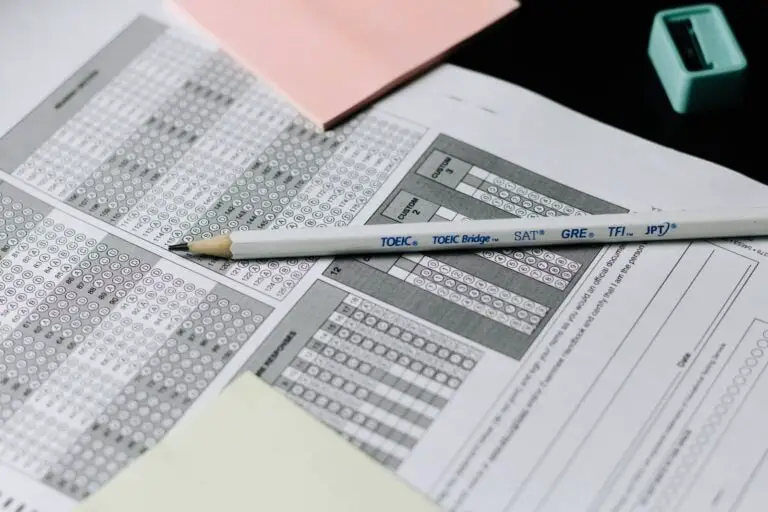If you are considering taking the General Educational Development (GED) test, it is essential to understand the format and structure of the exam for each subject. For individuals preparing for the science portion of the GED test, knowing the number of questions they will encounter can help them better plan their study strategies and allocate their time effectively. In this article, we will explore the question of how many questions are on the science GED test and provide valuable insights for test takers.
How Many Questions Are on the Science Ged Test?
The Science GED test is one of the four sections of the General Education Development (GED) test. The test is designed to measure the test-taker’s knowledge and skills in the subject of science, which includes the areas of physical science, life science, and earth and space science. The Science GED test is divided into two parts, with a total of 35 questions. The test-takers are required to demonstrate their understanding of scientific concepts, principles, and theories, as well as their ability to apply scientific reasoning and analysis to real-world situations.
The Science GED test is designed to be equivalent to a high school level of knowledge and skills, and passing the test is considered equivalent to completing a high school level science course. The test is taken by individuals who did not complete their high school education and wish to demonstrate their knowledge and skills equivalent to a high school graduate.

Format and Structure of the Science GED Test
The Science GED test is divided into two parts, Part 1 and Part 2. Part 1 consists of multiple-choice questions and Part 2 consists of short-answer and extended response questions.
The multiple-choice questions in Part 1 are designed to assess the test-taker’s knowledge of scientific concepts, principles, and theories. The questions may include diagrams, graphs, or other visual aids.
Part 2 of the test requires the test-takers to apply their knowledge and skills to real-world situations by answering short-answer and extended-response questions. These questions may require the test-takers to analyze data, interpret data, or explain scientific concepts or principles. The test-takers are also required to use appropriate scientific terminology, conventions, and reasoning.
The test is computer-based and timed, with a total of 90 minutes for Part 1 and 90 minutes for Part 2. The test-takers are required to complete the test within the allotted time.
Number of Questions on the Science GED Test
The Science GED test is divided into two parts, with a total of 35 questions. Part 1 of the test consists of 25 multiple-choice questions, while Part 2 consists of 10 questions (short-answer and extended-response questions)

It’s important to note that the number of questions on the Science GED test may vary depending on the version of the test and the test-taker’s performance on the test. Some test-takers may be required to answer fewer or more questions depending on their performance on the test.
It’s important for test-takers to be aware of the number of questions on the test and to manage their time accordingly. It is recommended to practice taking practice tests under timed conditions to improve your time management skills.
Types of Questions on the Science GED Test
The Science GED test includes different types of questions to assess the test-takers’ knowledge and skills in the subject of science. These types of questions include:
- Multiple-Choice Questions: These questions consist of a stem (the question or problem) and several answer choices. Test-takers are required to select the correct answer from the given choices.
- Short-Answer Questions: These questions require the test-takers to provide a brief and specific written response. The response should be relevant to the question and demonstrate the test-takers’ understanding of scientific concepts or principles.
- Extended-Response Questions: These questions are similar to short-answer questions, but require a more detailed and comprehensive written response. Test-takers are required to analyze data, interpret data, or explain scientific concepts or principles. These questions may also include diagrams, graphs, or other visual aids.
It’s important for test-takers to be familiar with the types of questions on the Science GED test, and to practice answering different types of questions to improve their skills.
Time Allotment for the Science GED Test
The Science GED test is timed, with a total of 90 minutes for Part 1 and 90 minutes for Part 2. The test-takers are required to complete the test within the allotted time.

It’s important for test-takers to manage their time effectively during the test, as time management is critical to completing the test within the allotted time. Test-takers are advised to pace themselves during the test, and to not spend too much time on any one question. It’s also important to use the time during the test efficiently by focusing on the questions that you know and leaving the more difficult questions for later.
It’s recommended to practice taking practice tests under timed conditions to improve your time management skills, and get a sense of the time pressure you will experience on test day.
Factors Influencing the Number of Questions
The number of questions on the science GED test may vary depending on several factors:
1. Test Version: The GED test is periodically updated to align with current educational standards and scientific advancements. Consequently, the number of questions and the specific content covered in the science section may vary from one version to another.
2. Test Difficulty: The GED test aims to assess a candidate’s knowledge and skills equivalent to that of a high school graduate. The number of questions may be adapted to challenge test takers at an appropriate level and accurately evaluate their scientific comprehension and problem-solving abilities.
3. Test Development: The GED test is developed by experts in the field of education and subject matter specialists. They meticulously design the exam to cover a wide range of scientific concepts and evaluate key competencies. The number of questions is determined based on the extensive research and analysis carried out during the test development process.
Knowing the Exact Number of Questions
To obtain the most accurate and up-to-date information regarding the number of questions on the science GED test, it is recommended to refer to official GED resources or study materials provided by reliable sources. The official GED website, GED preparation books, or online study platforms specifically tailored for GED test preparation can provide candidates with the most current information regarding the content and structure of the science section.

